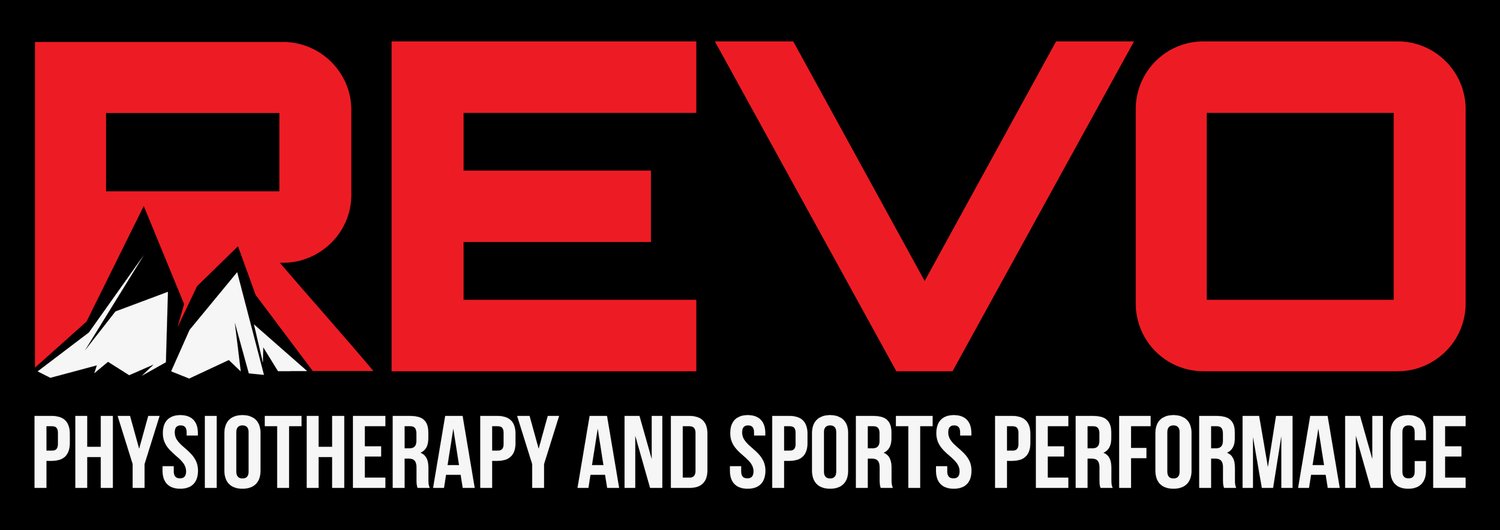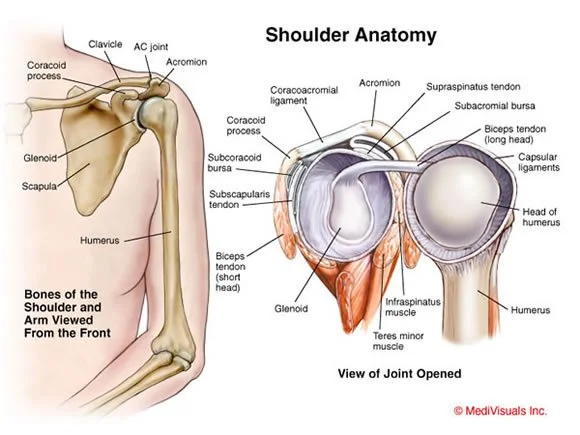Shoulder pain? Start at the thoracic spine.
Shoulder pain is not ok. Never. At some point in athletic history the acceptance of shoulder pain became the norm. If your shoulders are smoked after a day of climbing, or riding the bike, or pressing weights over your head, you need to take a 30,000 foot view of your upper extremity and spinal mobility and mechanics before you are forced to stop playing your sport.
First things first, what you don't know about your mobility can hurt you. Let's dive into the basic position requirements for a healthy athletic shoulder.
Your shoulder is a fairly complicated joint. Below you will see an anterior view of the body. You will notice the shoulder is basically a floating joint. Attached to the bodies central bony anatomy only via the clavicle. The scapula, commonly called the shoulder blade, floats on tops of the ribs and supported by various muscular attachments.
image source, medvisuals
Position changes related to the shoulder blade have direct impact on the shoulders function. A very important part of the shoulder blades resting position is the thoracic spine. An image below shows some of the various muscular attachments around the thoracic spine and shoulder blade. Whoa, complicated.
Take note that the ribs attach to the thoracic spine. As we already know the shoulder blade is "floating" above the ribs thus their position plays a roll here. More importantly, the thoracic spine is the foundation for this position. A forward slouched posture or a flexed thoacic spine will tend to drive the entire shoulder complex forward. You've seen this at the gym and the office. This forward shoulder position can lead to quite a bit of over stress at the anterior shoulder and is often a player in limited shoulder flexion range of motion.
The most common shoulder ROM restriction I see clinically is flexion. Shoulder flexion is taking your arm straight up over your head. Ideally, you will have 180 degrees of ROM, instant access. Without that ROM, compensations show up and the mechanics of the shoulder blade become faulty. Think impingement, bicep tendon irritation and more.
The perfect starting place for most folks when troubleshooting shoulder pain or limited ROM is with the thoracic spine. We want to improve the extension and global mobility in order to free up the mobility you already have at the shoulder.
Check out the video below for a few quick tips on addressing your missing shoulder flexion ROM. Test out your ROM before trying these drills and see what kind of improvement you get from mobility work around the thoracic spine and shoulder blade musculature. Look for more posts and videos soon as I expand on the complex athletic shoulder.


